 |
 |
 |
| |
HIV Affects Brain Immediately After Infection with HIV RNA in the CSF & Inflammation & Brain Injury Continues Unfolding During Chronic Infection & There is a Need for Routine Monitoring
|
| |
| |
Reported by Jules Levin
CROI 2011 Boston March 2
Here are 3 studies presented in the oral session on Monday "Viral and Host Factors in HIV-associated Neurological Disease, Monday, 4-6 pm". The first study presented by Victor Valcour was the 1st cut of data from a study of acutely infected patients in Thailand and he found within days HIV enters the brain, there is CSF RNA and inflammation is detectable. The 2nd study in Chicago looks at patients within the first year of HIV-infection and looked at the 2-month timepoint and found damage: "intensive volumetric analysis finds consistent pattern of loss of brain gray matter early in the clinical course of HIV-infection." The 3rd study looks at brain injury in chronically infected patients. They found: HIV-associated brain injury continues to unfold in the setting of stable HIV disease & treatment. Neuroasympomatic on HAART are at significant risk for converting to subclinical or mild cognitive impairment. Cytokine markers worsen & may provide predictive measures. Nadir CD4 before HAART is significantly associated with persistent injury & neurocognitive impairment thus predicts impairment. Progressive brain injury likely due to effects of several host & disease-related factors - HIV RNA, immune activation, duration of treatment, duration of infection, and to a lesser degree aging; comorbid conditions (HCV, CVD factors) may also contribute. The authors say: these changes argue for the routine monitoring of the CNS & initiating HAART at earlier stages of HIV. These findings reinforce the need for better understanding of the causative factors, including the effects of therapy, and the identification of single or composite biomarkers for patient monitoring & diagnosis. Roger Pomerantz asked if they planned analyses to look at comparisons of different ART regimens to see if there are differences in the affect on progression of disease in the brain & CNS and the speaker said yes.
LINK to video of presentations:
http://app2.capitalreach.com/esp1204/servlet/tc?c=10164&cn=retro&s=20445&&dp=player.jsp&e=13718&mediaType=podiumVideo
(1) HIV Brain Viral and Inflammatory Signature during Acute Infection: CSF HIVRNA & Inflammation Dectectable Right Away
Victor Valcour
The immunologic and virologic events of acute HIV infection (AHI, acute HIV-infection) may have long-term consequences. This study characterized central nervous system (CNS) involvement in AHI by defining the timing, extent, and pattern of HIV RNA appearance in cerebrospinal fluid (CSF) and the CNS immune response using magnetic resonance spectroscopy (MRS) and by CSF vs plasma cytokine profiles. Nineteen subjects underwent lumbar puncture (LP) (n = 16) and/or MRS (n = 16). They will be looking at the effect of early treatment, HAART in the future in these patients and the lomgitudinal pattern of changes through primary into chronic HIV.
"Acute HIV infection is associated with detectable virus in CSF as early as 5 days post exposure. CSF HIV RNA was detected in 13/16 subjects with the 3 undetectable cases equally distributed in F-I, F-II, and F-III. CSF HIV RNA was detected as early as 5 days post estimated exposure. CNS inflammatory markers are noted early as detected by CSF cytokines and MRS metabolites. The CSF cytokine pattern may differ from that in plasma during acute infection."
CSF HIV RNA correlated to plasma HIV RNA (r = 0.59, p = 0.02). Adjusting for age, MRS Cho/Cr was elevated in F-I/F-II compared to controls at BG (p = 0.038) with a trend at OGM (p = 0.070). CSF cytokines were variably but not universally elevated across Fiebig stages in contrast to that seen in plasma. CSF neopterin and MCP-1 were prominently elevated in CSF and correlated to CSF HIV RNA level ([r2 = 0.400, p = 0.008] and [r2 = 0.399, p = 0.009], respectively).
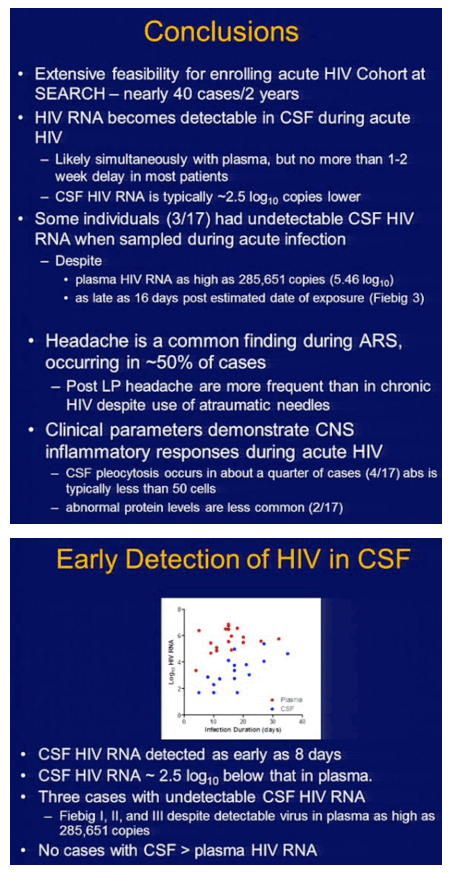
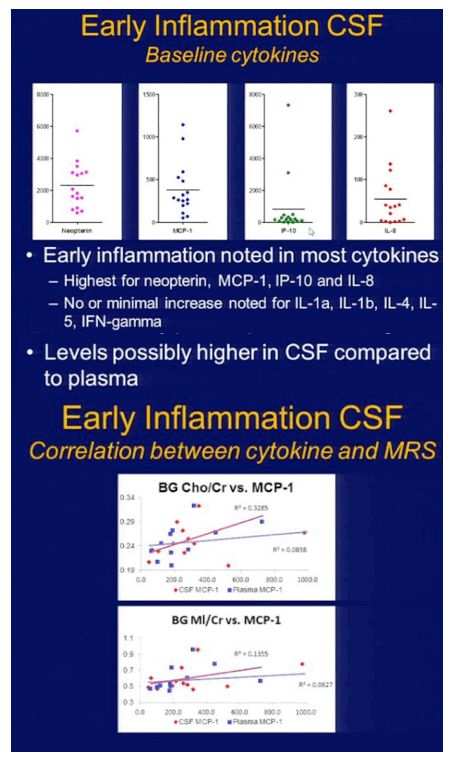
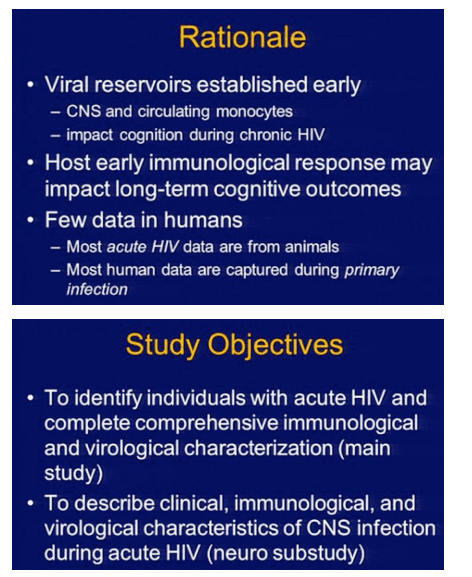
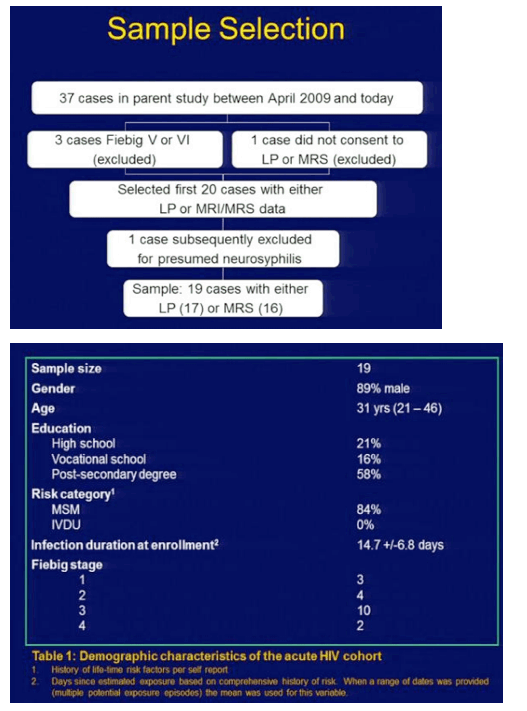
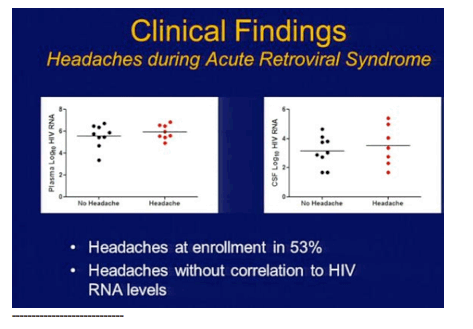
----------------------------
(2 of 3) Injury to the Brain Is Evident Early in HIV Infection: Brain gray matter was significantly reduced in the HIV group
The findings, which were based on objective in vivo measurements that do not depend on symptom presentation, indicate bilateral reductions in cerebral cortex and third ventricle expansion. The brain may be injured by the dramatic burst of viremia in association with acute HIV, before host cellular immune defenses can contain massive viral replication associated with initial exposure. A clearer understanding of the natural history of brain injury in HIV infection, particularly in the earliest stages, is critical to neuroprotection strategies.
Ann Ragin*1, Y Wu2, H Du2, R Ochs1, and L Epstein1,3
1Northwestern Univ, Chicago, IL, US; 2NorthShore Univ Hosp, Evanston, IL, US; and 3Children`s Memorial Hosp, Chicago, IL, US
Background: HIV is widely disseminated soon after initial exposure. Possible changes occurring in the brain in the early clinical course, however, are not well characterized. The Chicago Early HIV Infection Cohort was established to evaluate the presence and extent of brain injury within approximately the first year of infection. This report details initial findings from an intensive brain volumetric analysis of constituent tissue classes and >40 specific neuroanatomic structures based on high resolution imaging.
Methods: We evaluated 43 HIV seropositive (38 males, 5 females; age 32.9±9.8; CD4 162 to 1282/mm3; plasma viral load, undetectable to 346,000 copies/mL) and 22 seronegative (16 males, 5 females; age 31.4±8.8) subjects without history of neurological disorder, stroke, head trauma, opportunistic CNS infection, psychosis, or magnetic resonance contraindication. The groups did not differ in mean age, gender, or race. VITROS Enhanced Chemiluminescence detuned assay was used to assess relative recency of infection (antibody response still evolving following seroconversion). The window period since infection ranged from 0.205 (<70 days) to 80.5, and was estimated to average <1 year in this sample: 20 HIV+ subjects were HAART na•ve. Subjects were scanned at 3T using T1, anatomic MPRAGE; 1-mm isotropic resolution. Volumetric measurements were derived using a fully automated algorithm (e.g., Freesurfer) and divided by intracranial cavity volume to adjust for brain size.
Results: Brain gray matter was significantly reduced in the HIV group (p = 0.05). Further examination indicated reductions in left (p = 0.02) and right (p = 0.04) cerebral cortex, and significant enlargement of the third ventricle (p = 0.04).
Conclusions: This intensive brain volumetric analysis finds loss of gray matter early in the course of infection. The findings, which were based on objective in vivo measurements that do not depend on symptom presentation, indicate bilateral reductions in cerebral cortex and third ventricle expansion. The brain may be injured by the dramatic burst of viremia in association with acute HIV, before host cellular immune defenses can contain massive viral replication associated with initial exposure. A clearer understanding of the natural history of brain injury in HIV infection, particularly in the earliest stages, is critical to neuroprotection strategies.
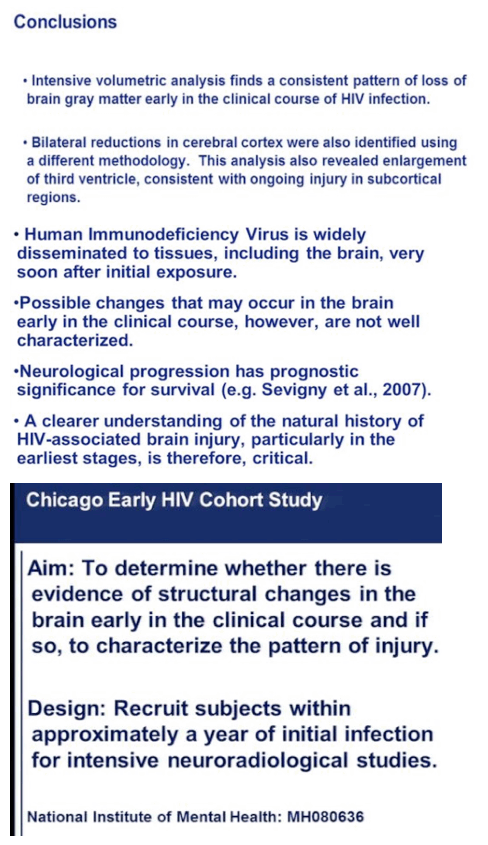
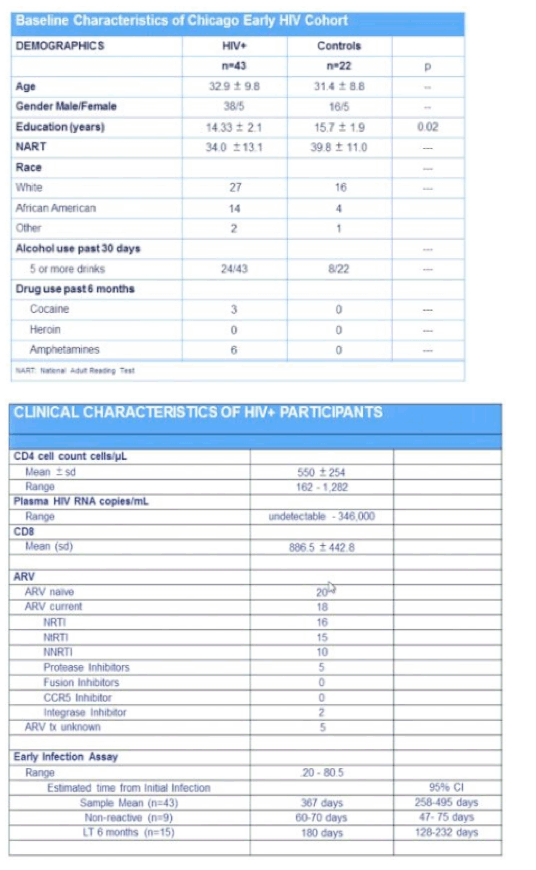
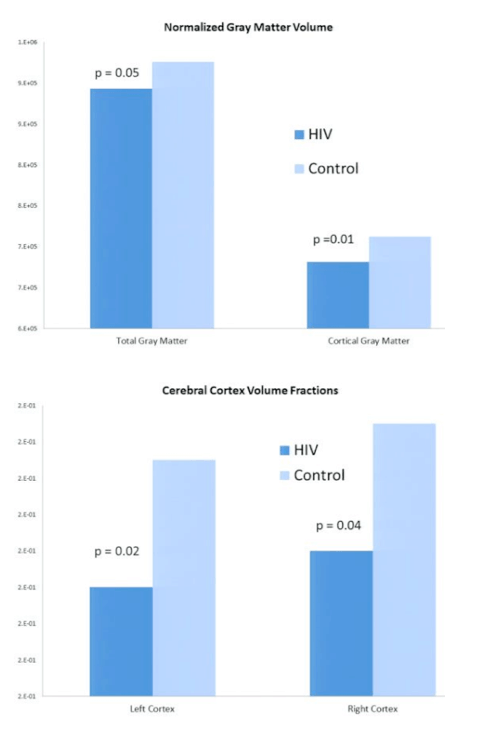
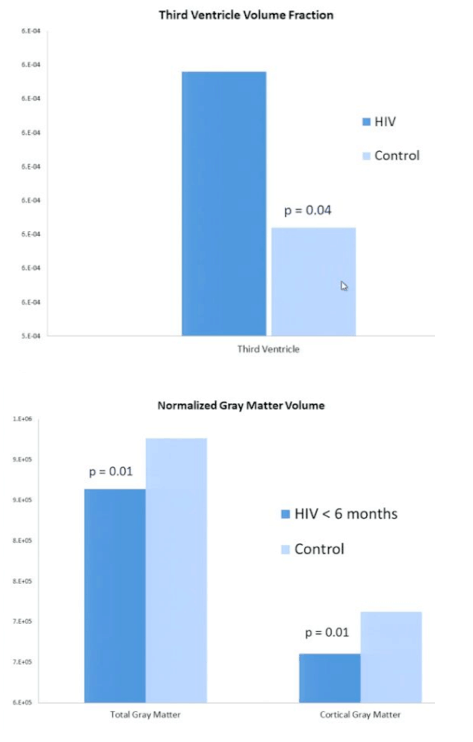
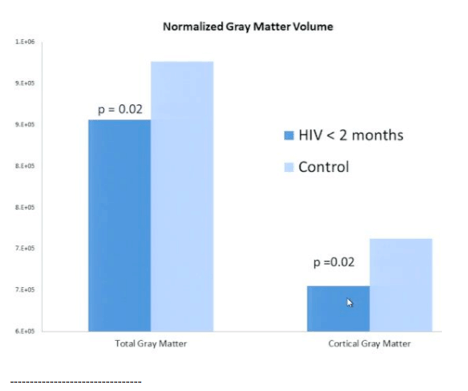
---------------------------------
(3 of 3) A Longitudinal Study of Neurological Injury in HIV-infected Subjects on Stable ART: The HIV Neuroimaging Consortium Cohort Study
Bradford Navia
Emerging evidence suggests that central nervous system injury and neurocognitive impairment (NCI) persist in the setting of chronic HIV infection and cART yet there have been few prospective studies on the course of neurological injury, rates for conversion to cognitive impairment, or their associated risk factors.
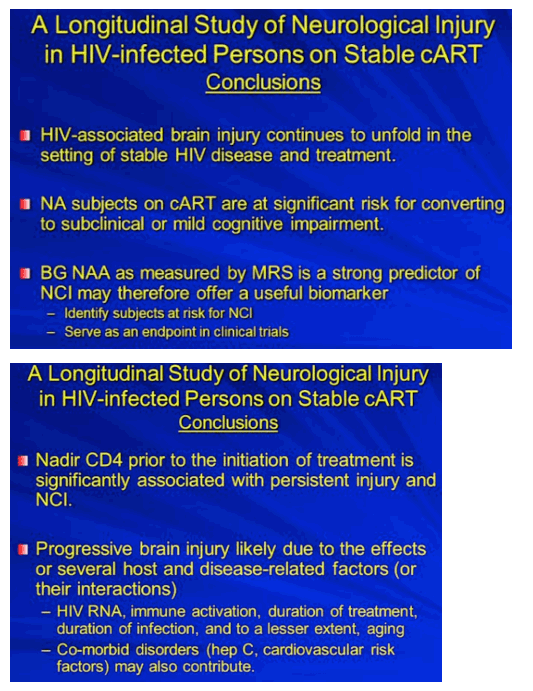
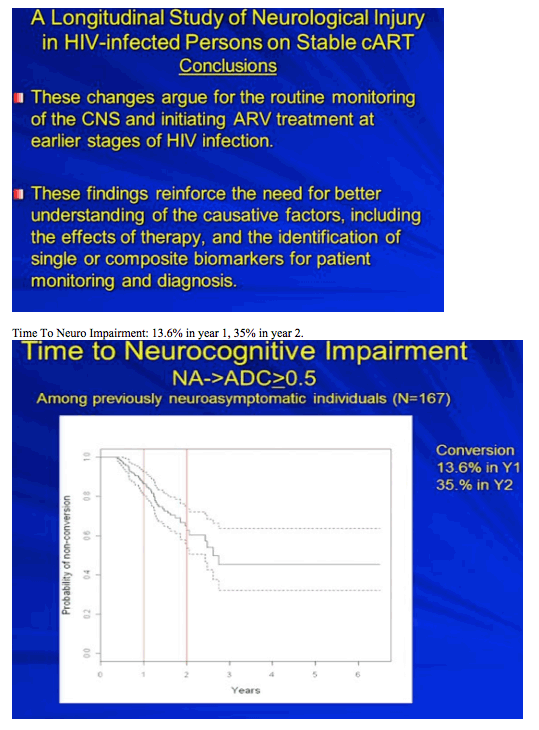
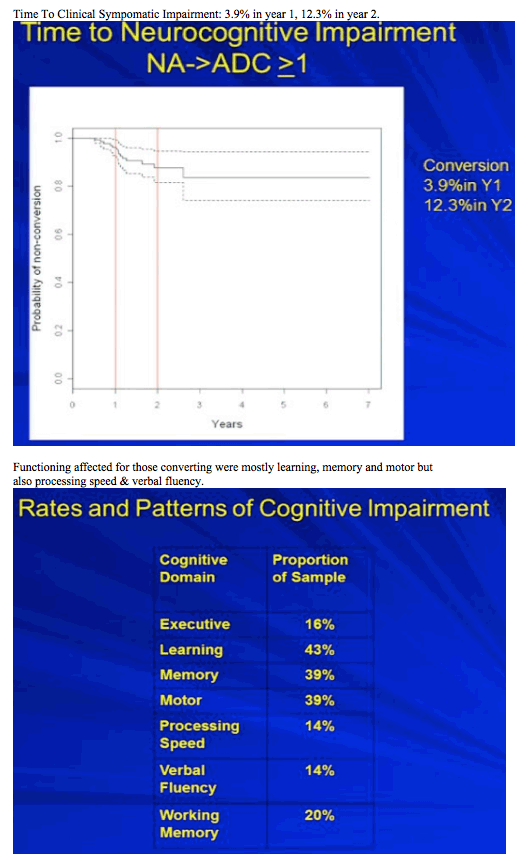
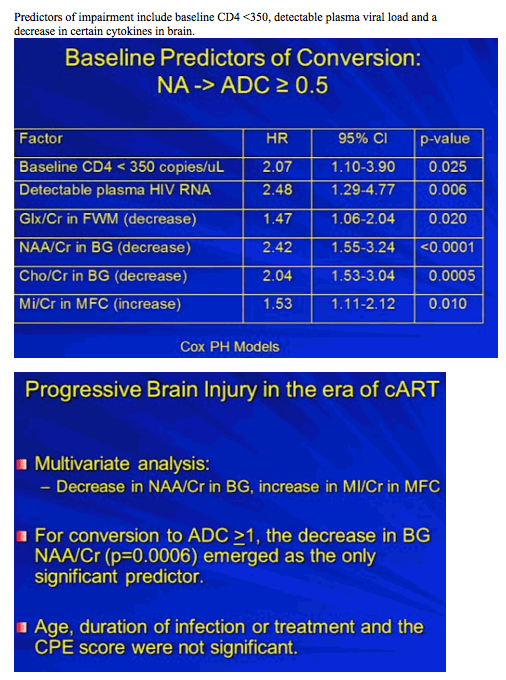
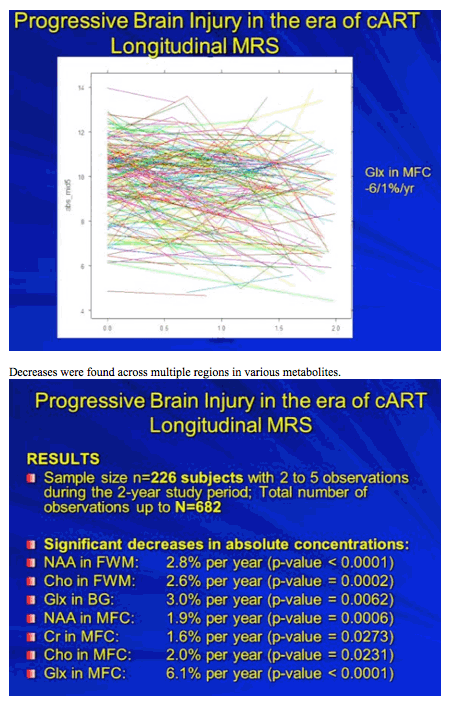
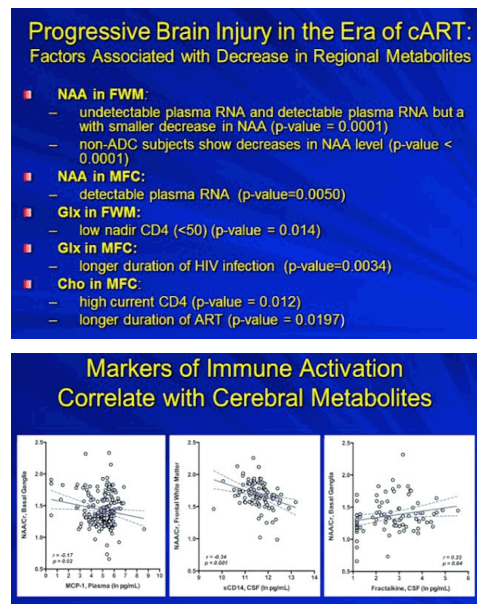
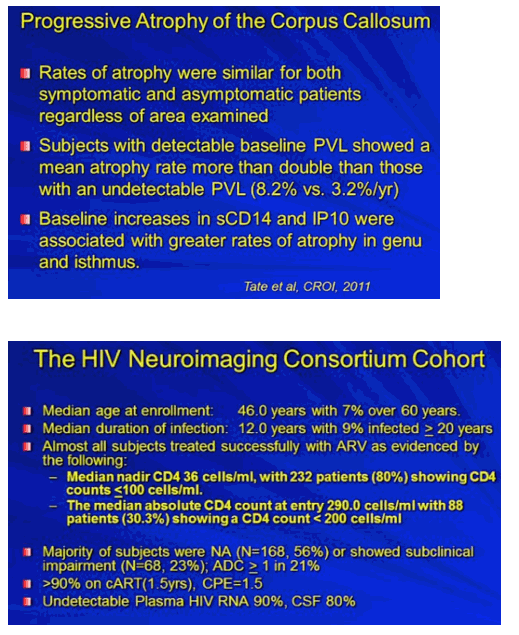
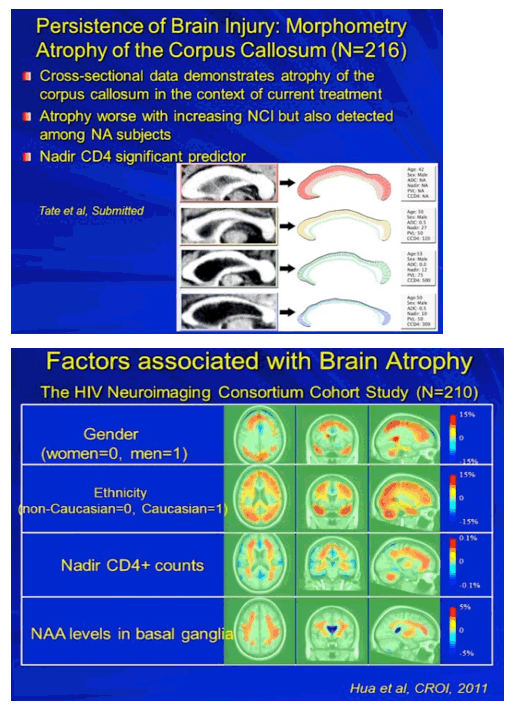
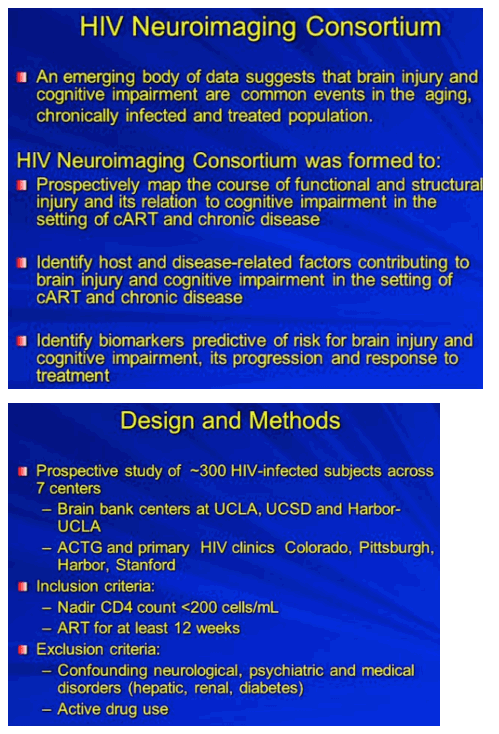
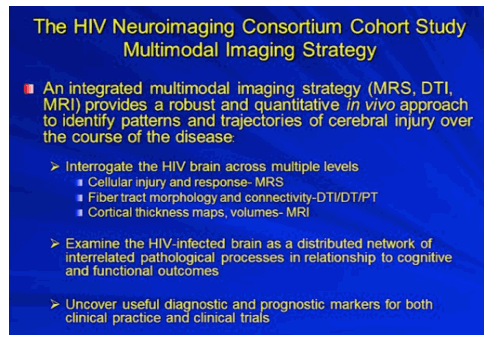
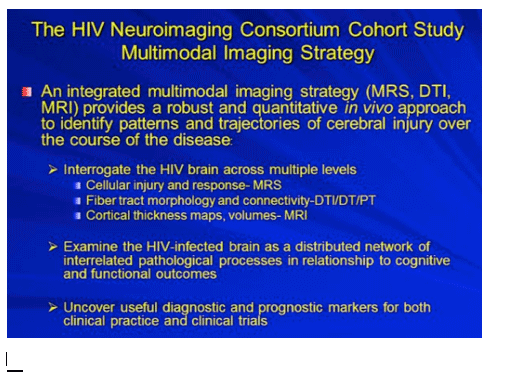
|
| |
|
 |
 |
|
|